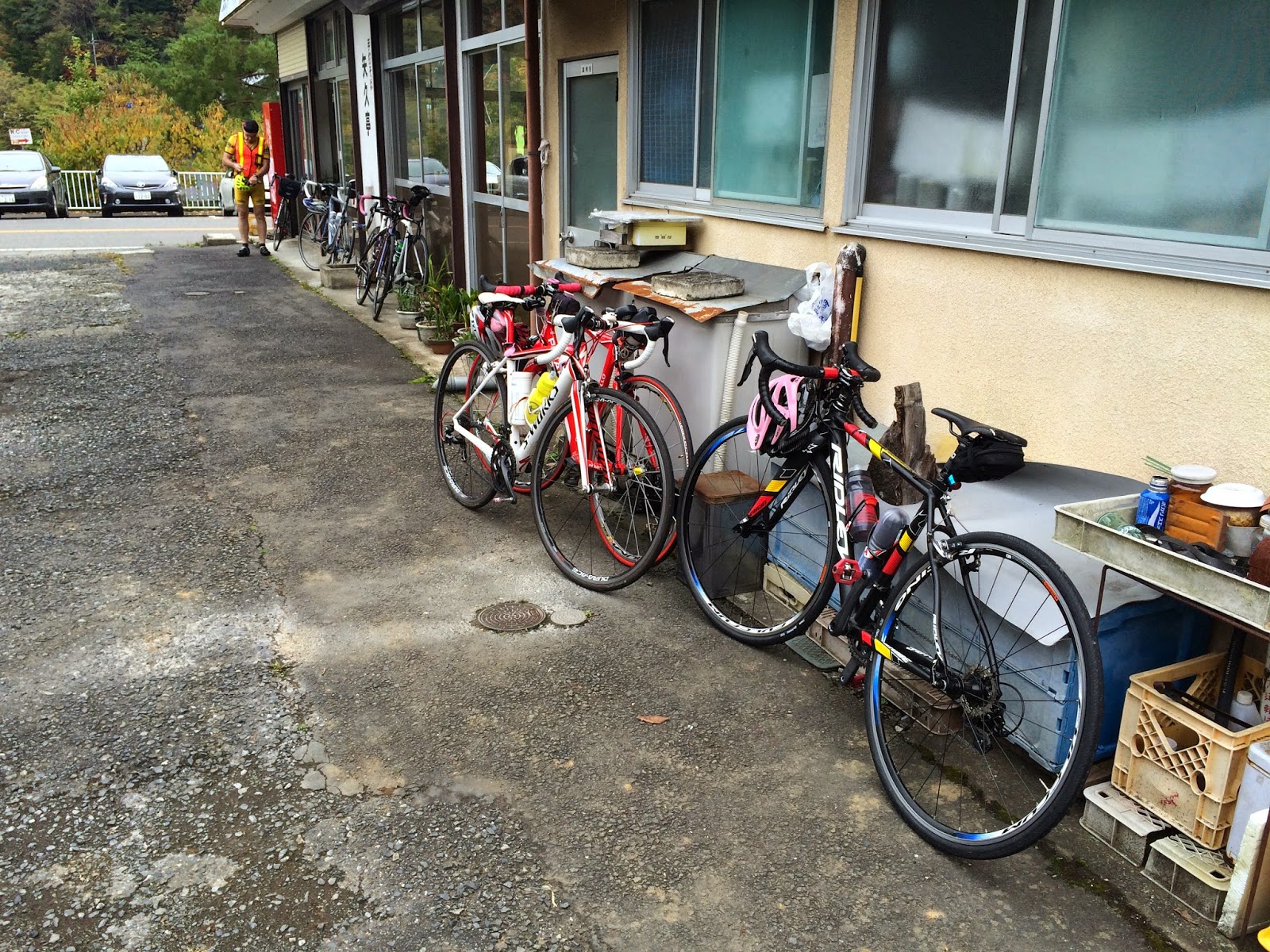In the end, I went up the Akigawa, through Kobu Tunnel, then back to Uenohara and back via the North side of Lake Tsukui, then Onekansen Doro. 141.6 kms, around 1250 meters climbing. Just what I needed.
The weather was cool, even cold and damp along the Akigawa -- 10 degrees C and 96 percent humidity (?) according to one sign just past the Tokura 7-11.
 |
| I tried to go along the lower Akigawa ... but the path was blocked off due to potential slides. |
On the road to Itsukaichi, I passed 5-6 Japanese cyclists, 3 in a group and singles. We all stopped and so chatted a bit at the Tokura 7-11. They were heading for Tomin no Mori, except one older rider who said he would do Kobu/Ura-Wada. On a solo ride it was nice to have some fellowship. I pushed off ahead and did not see them again.
At a second stop -- the Circle K on Route 412 just before heading toward the North shore of Tsukui, I was eating lunch when 3 young women -- presumably college students -- pulled up for a rest stop. One was clearly the leader, telling the others what to do and giving pointers. We chatted and I showed off the Canyon Shark.
 |
| The XL Canyon Shark towers over the XS women's bikes. (The photo was a bit rushed due to a car trying to park against the back of my legs.) |
They had come over Otarumi and were heading back toward town down 412/413.
I told them I was heading over the North side of Tsukui to avoid traffic and do the extra short climbs, and headed out. Lake Tsukui was very tranquil, a cyclist strolling on the bridge. I almost hopped off to enjoy the view. But instead went on until I got up the hill to the forest road. There were nice fall colors still visible from the North side.
After I rejoined Route 413 to the west of Tsukui, I saw the 3 students from the Circle K in a line ahead. They had made good time by taking the direct route. I passed them just after the road dips and zig zags toward a short climb that ends with the start of a long straightaway to Route 16. Jerome usually zips ahead of me on this little climb, ... but I wanted to put on a good show, so after exchanging greetings, I hammered up the hill, making the traffic light I usually miss at 川尻 and leaving them somewhere down the hill.
When I got home and uploaded my ride, I was disappointed to find that this little hill is not at a Strava "segment" ... so I created one. My little power-climb today put me 9th out of 585 riders, and at 1 min 10 seconds, was 28 seconds faster than I have done this climb before. Yippee.
Then a quick trip back in via Onekan and the Tamagawa, and a hot bath.
------------------------------
Fall foliage under dark skies between Kobu Tunnel and Uenohara:
 |
| The road is the road. |
 |
| Torii, fields, and hills between Kobu Tunnel and Wada. |
 |
| Bike Leaning at bamboo bridge |

























































